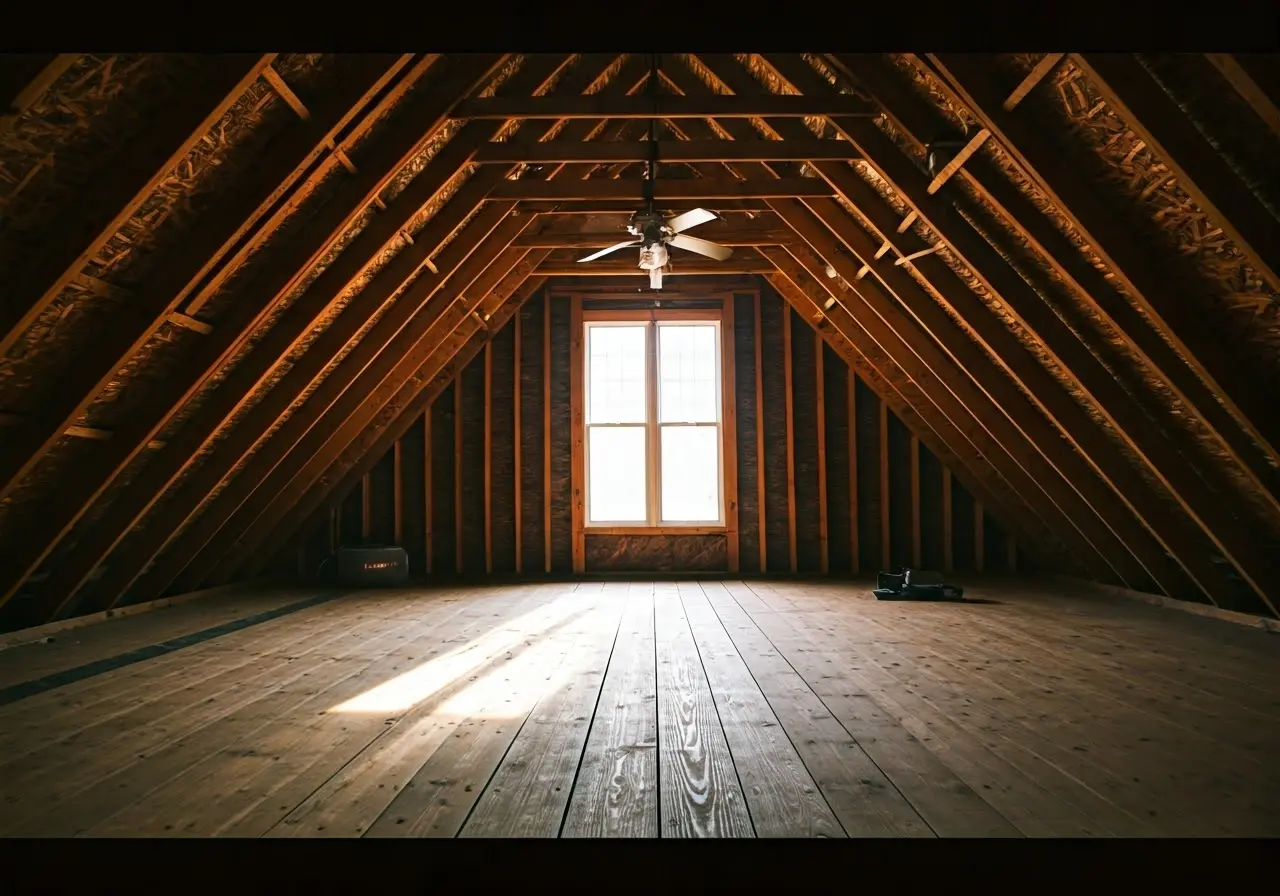Attic fans are often overlooked as a way to improve energy efficiency at home. Yet, they can play a vital role in maintaining a comfortable indoor temperature and reducing energy bills. Let’s explore how attic fans provide these benefits.
What Is an Attic Fan?
An attic fan is a ventilation device that expels hot air from your attic, preventing heat buildup that can affect your home’s temperature and energy efficiency.
These fans come in various designs, including roof-mounted and gable-mounted options. Roof-mounted attic fans are installed on the roof, typically near the ridge, while gable-mounted fans are positioned on a home’s gable wall. Both types serve the purpose of pushing hot air out and bringing cooler air in.
Not to be confused with whole-house fans, attic fans specifically focus on ventilating the attic space itself. Whole-house fans, on the other hand, are designed to cool the entire home, including living spaces.
How Do Attic Fans Work?
Attic fans pull in cooler air from outside and push out the hot air that accumulates in your attic, effectively cooling the space. This process helps regulate the temperature inside your home.
During the summer, attics can reach temperatures of over 150°F (65°C). An attic fan helps reduce this heat by exhausting the hot air and drawing in cooler air through soffit vents or other openings. This not only reduces the heat load on your home’s roof but also lowers the strain on your air conditioning system.
Installation of an attic fan may also lower the risk of extreme heat damaging roofing materials. Excessive heat can warp shingles and cause premature aging of other roof components, potentially leading to costly repairs or replacements.
Benefits of Using Attic Fans
By reducing the temperature in your attic, these fans lessen the strain on your HVAC system, leading to lower energy consumption and reduced heating and cooling costs.
Energy savings aren’t the only perk of attic fans. They also help prevent costly structural damage to your home. By venting hot, moist air, these fans can reduce the risk of mold growth and wood rot, which can develop when warm, humid air is allowed to build up unchecked.
Environmental considerations can also make attic fans a smart choice. By reducing the energy needed for heating and cooling, attic fans contribute to a reduction in greenhouse gas emissions, promoting a more sustainable household energy consumption pattern.
When Should You Use an Attic Fan?
Attic fans are most effective during warm seasons when the heat in the attic is at its highest, but they can also help during winter months by preventing moisture buildup.
Using attic fans from late spring to early fall can allow for significant energy savings. During these months, an attic fan helps cool down an entire house faster, especially during peak afternoon hours when the sun is most intense.
In winter, while many turn their thoughts away from fans, attic ventilation remains crucial. Attic fans help mitigate the risk of ice dams, which can form when warm air from below melts snow on the roof. When this water refreezes at the eaves, it can lead to water damage.
Installation Considerations
Proper installation and insulation are critical to ensuring that attic fans function effectively. Consider consulting a professional to determine the best setup for your home.
A professional installation will ensure that the fan is placed at the optimal location and properly sealed to avoid air leaks. Additionally, an expert can advise on the right fan size and power needed for your particular attic space to achieve maximum efficiency.
Another essential consideration is ensuring that your attic has a balanced intake and exhaust system. Without sufficient intake vents, the attic fan might not function efficiently, or worse, can create negative pressure affecting your home’s interior.
Final Thoughts on Attic Fans and Energy Savings
By understanding and implementing the use of attic fans, you can significantly reduce your heating and cooling costs. These fans not only improve comfort levels inside your home but also contribute to long-term energy savings.










